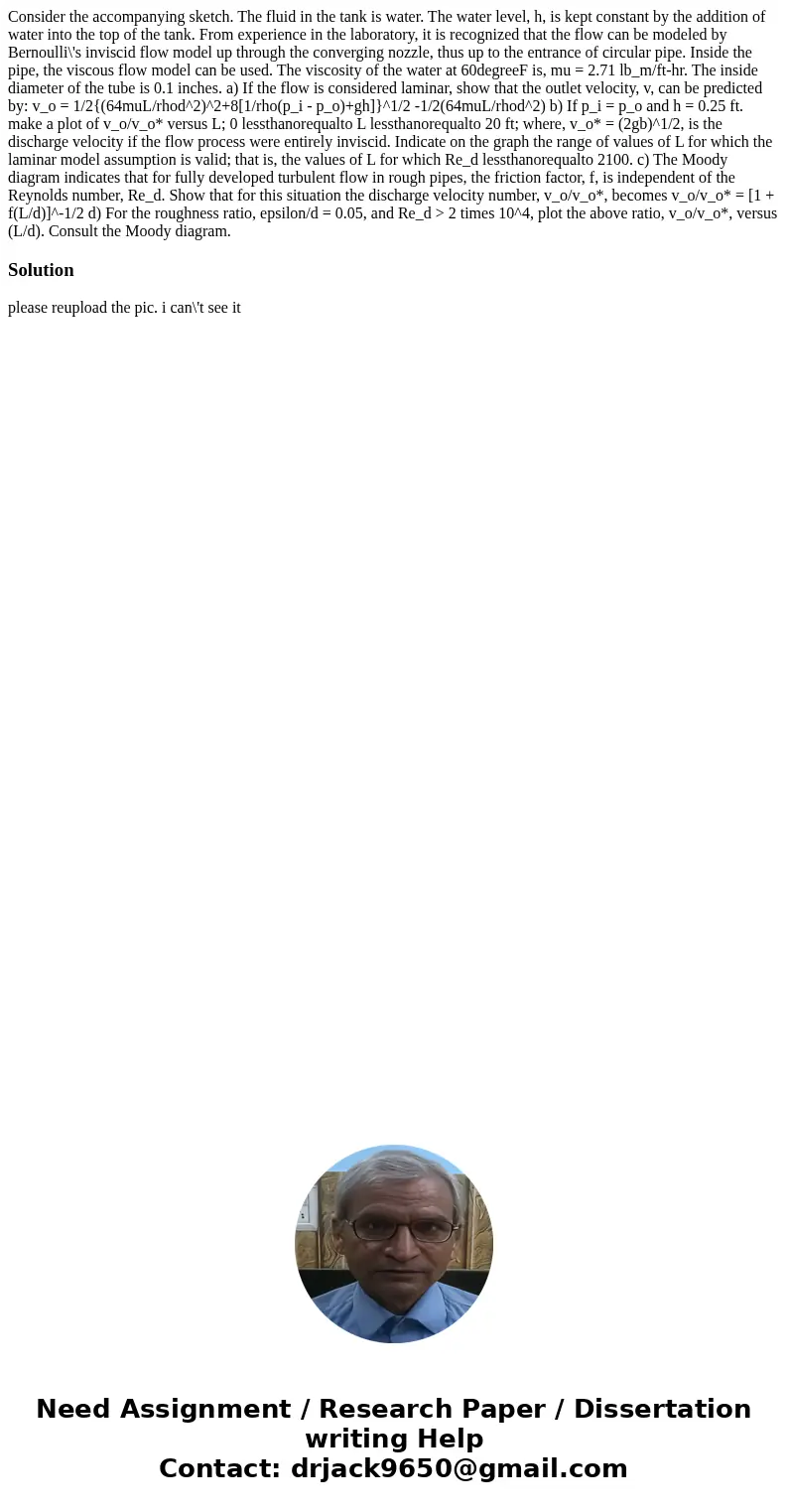Consider the accompanying sketch The fluid in the tank is wa
Consider the accompanying sketch. The fluid in the tank is water. The water level, h, is kept constant by the addition of water into the top of the tank. From experience in the laboratory, it is recognized that the flow can be modeled by Bernoulli\'s inviscid flow model up through the converging nozzle, thus up to the entrance of circular pipe. Inside the pipe, the viscous flow model can be used. The viscosity of the water at 60degreeF is, mu = 2.71 lb_m/ft-hr. The inside diameter of the tube is 0.1 inches. a) If the flow is considered laminar, show that the outlet velocity, v, can be predicted by: v_o = 1/2{(64muL/rhod^2)^2+8[1/rho(p_i - p_o)+gh]}^1/2 -1/2(64muL/rhod^2) b) If p_i = p_o and h = 0.25 ft. make a plot of v_o/v_o* versus L; 0 lessthanorequalto L lessthanorequalto 20 ft; where, v_o* = (2gb)^1/2, is the discharge velocity if the flow process were entirely inviscid. Indicate on the graph the range of values of L for which the laminar model assumption is valid; that is, the values of L for which Re_d lessthanorequalto 2100. c) The Moody diagram indicates that for fully developed turbulent flow in rough pipes, the friction factor, f, is independent of the Reynolds number, Re_d. Show that for this situation the discharge velocity number, v_o/v_o*, becomes v_o/v_o* = [1 + f(L/d)]^-1/2 d) For the roughness ratio, epsilon/d = 0.05, and Re_d > 2 times 10^4, plot the above ratio, v_o/v_o*, versus (L/d). Consult the Moody diagram.
Solution
please reupload the pic. i can\'t see it

 Homework Sourse
Homework Sourse